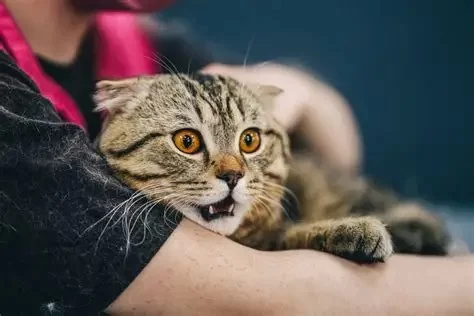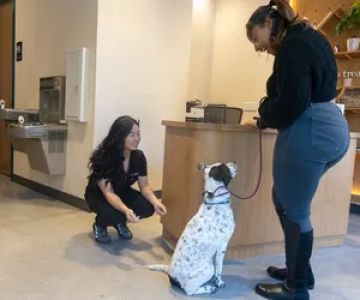Understanding Anxiety in Cats and Dogs
Recognizing anxiety in cats and dogs can be more challenging than many pet owners expect. Unlike humans, pets cannot verbalize their fears or stress. Instead, they rely on subtle cues—body language, unusual behavior, or sudden changes in appetite. As more American families adopt pets and integrate them deeply into home life, anxiety in pets has become a growing concern, often misunderstood or overlooked until symptoms intensify.
Whether it’s a cat hiding under the bed for hours or a dog pacing the house nonstop, understanding what these behaviors mean is the first step toward helping them feel safe. And with the right knowledge, owners can transform their homes into calmer environments that support their pets’ emotional well-being. For personalized advice, many families turn to Hidden Brook Veterinary for guidance tailored to their pets’ unique needs.
What Anxiety Looks Like in Cats and Dogs
Pets express anxiety in ways that may seem confusing at first. These behaviors often appear gradually, and owners might not recognize the patterns until the anxiety becomes severe. Both species show stress, but how they display it can vary dramatically.
1. Behavioral Signs in Cats
Cats are masters at hiding stress. A cat experiencing anxiety may retreat into closed spaces, groom excessively, vocalize more often, or suddenly refuse to use the litter box. Some cats become unusually clingy, while others avoid interaction altogether. These changes often develop after a disruption such as moving homes, adding a new pet, or adjusting to a new routine.
A memorable example comes from a Maine Coon named Oliver, whose family noticed he began scratching doors and crying at night after they welcomed a newborn. Oliver wasn’t acting out—he was overwhelmed by the new sounds, scents, and schedule shifts. With patience and structured calming techniques, including more predictable feeding times, he returned to his affectionate self within weeks.
2. Behavioral Signs in Dogs
Dogs tend to show anxiety through more outward behaviors. Excessive barking, pacing, restlessness, whining, chewing objects, and destructive behavior are common indications. In severe cases, dogs may drool, tremble, or try to escape enclosed areas, especially during storms or fireworks.
One family shared a story about their rescue dog, Daisy, who panicked whenever she heard thunder. She would press her body against the wall and pant heavily. By introducing a safe den-like space, sound-masking practices, and professional behavioral support, Daisy’s storm anxiety slowly became manageable.
Common Causes of Anxiety in Cats and Dogs
Understanding the root cause of anxiety is essential for creating an effective treatment plan. Anxiety can stem from a combination of experiences, environmental changes, or health issues.
1. Separation Anxiety
Pets who grow attached to their owners may develop stress when left alone. Dogs are especially prone to separation anxiety, but cats can experience it too, often showing it through vocalization or destructive scratching near doors.
2. Environmental Changes
Moving to a new home, rearranging furniture, traveling, or even changing daily routines can disrupt a pet’s sense of stability. Sensitive pets may need additional time and reassurance to adjust.
3. Loud Noises or Traumatic Events
Fireworks, thunderstorms, construction sounds, or past negative experiences can trigger anxiety. Pets with trauma histories—such as rescues—may react strongly to otherwise ordinary stimuli.
4. Health-Related Anxiety
Chronic pain, thyroid issues, vision loss, and cognitive decline in senior pets can contribute to anxiety. Behavioral changes should always prompt a veterinary evaluation to rule out medical causes.
How Anxiety Affects Your Pet’s Health
Untreated anxiety can disrupt a pet’s well-being beyond behavior alone. Cats may develop urinary issues, digestive upset, or unhealthy grooming patterns. Dogs might experience weight fluctuations, weakened immune responses, or chronic stress hormones that affect heart and joint health.
A holistic approach to their emotional and physical needs ensures long-term wellness. Pet owners often find that once anxiety is managed, their pets become more playful, trusting, and engaged with the family.
Effective Ways to Manage Anxiety in Cats and Dogs
Helping pets cope with anxiety requires patience, observation, and consistency. While solutions vary based on the pet’s personality and triggers, several strategies are commonly effective for both cats and dogs.
1. Establish Predictable Routines
Pets find comfort in structure. Consistent feeding, playtime, and rest schedules reduce uncertainty and create a sense of security. Even small changes like keeping lights dim in the evening or playing quiet music during stressful events can support emotional balance.
2. Create Safe Spaces
A dedicated quiet area—such as a cozy nook, crate, or elevated cat perch—gives pets a retreat when overwhelmed. Filling the area with familiar scents or comfortable bedding enhances the calming effect.
3. Increase Mental and Physical Enrichment
Interactive toys, puzzle feeders, outdoor walks, and climbing furniture stimulate a pet’s mind and reduce boredom-triggered anxiety. Enrichment redirects energy toward positive activities rather than destructive behaviors.
4. Use Calming Tools
Products like pheromone diffusers, weighted blankets, gentle shirts, or calming treats can help reduce stress in certain situations. While not a complete solution, these tools often support training and behavioral therapy.
5. Seek Professional Behavioral Support
Certified trainers and veterinary behaviorists offer structured plans tailored to your pet’s needs. Their guidance can be invaluable, especially for pets with long-term or trauma-based anxiety.
When to Consult a Veterinarian
If your pet’s anxiety escalates, interferes with daily life, or seems tied to health issues, consulting a veterinarian is essential. A thorough evaluation helps determine whether medical conditions are contributing to the behavior. In some cases, vets may recommend medication alongside behavioral strategies.
Owners looking for compassionate, expert support often turn to Hidden Brook Veterinary. Their team helps families identify triggers, develop treatment plans, and choose the best calming resources for their pets.
Supporting Your Pet Through Anxiety
Living with an anxious pet can be emotionally challenging, but the journey becomes easier when you understand what they’re trying to communicate. With patience, structure, and professional guidance, anxious cats and dogs can thrive. Many pet parents find that the progress—whether small steps or major breakthroughs—deepens the bond between them and their animals.
If you’re ready to take the next step in helping your pet feel calm and secure, consider reaching out to trusted professionals such as Hidden Brook Veterinary for personalized care options that meet your pet’s emotional and medical needs.












